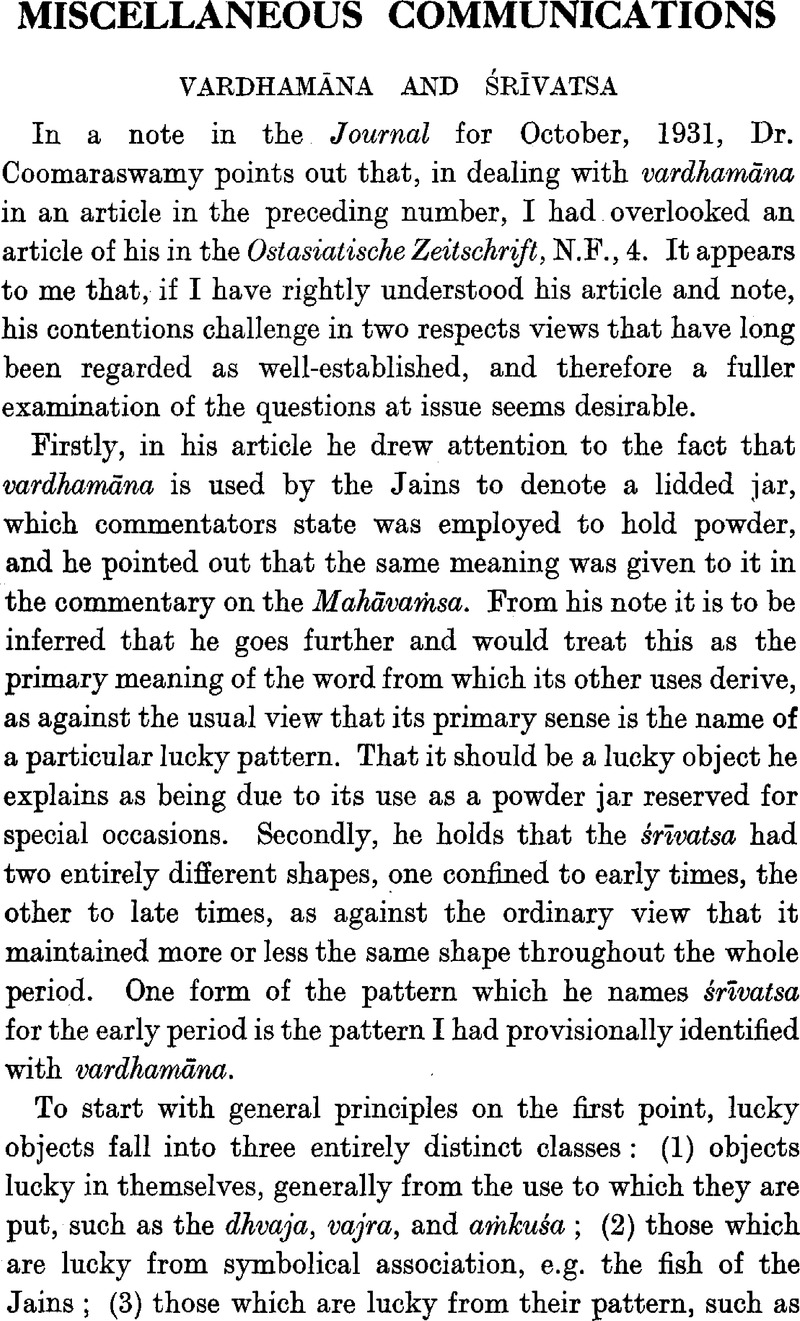No CrossRef data available.
Article contents
Vardhamāna and Śrīvatsa
Published online by Cambridge University Press: 15 March 2011
Abstract

- Type
- Miscellaneous Communications
- Information
- Copyright
- Copyright © The Royal Asiatic Society 1932
References
page 395 note 1 The inscriptions from Mathurā, , Ep. Ind., iGoogle Scholar, ii, and xix, show ten statues of Mahāvīra, three of Ṛṣabhanātha, and one of Pārśvanātha. Smith's plates show one of Pārśvanātha (pl. xc, fig. 1), with whom the stūpa was specially associated, and one of Mahāvīra (pl. xciv), the others being uncertain.
page 396 note 1 It is perhaps significant that of these two the first is the latest one to show the old breast-mark, and the second the earliest to show the śrīvatsa.
page 397 note 1 In fact the śrīvatsa may date in its ordinary shape from as remote an antiquity as the svastika. For a head from Kish (now apparently at Chicago) dating from the fourth millennium b.c. bears a circlet to which are attached three ornaments, which seem to me unmistakably śrīvatsas as known in India (Mackay, E., “Further Links between Ancient India, Sumer, and elsewhere,” fig, 8, in Antiquity, 12, 1931)Google Scholar.
page 397 note 2 For a similar use of inverted jars in prehistoric burials see Indian Antiquary, 1931, p. 137.


